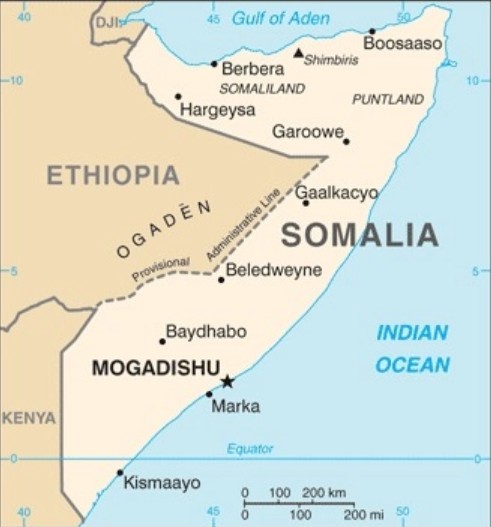Somalia Virtual Jewish History Tour
By Or Shaked
 |
Early Migrations and Establishment of Communities
Contributions and Social Dynamics
Decline of the Jewish Community
Current Status and Historical Legacy
Early Migrations and Establishment of Communities
The history of Jews in Somalia began as early as the 7th century with the migration of small groups. Significant numbers arrived later, particularly in the late 19th and early 20th centuries. These were primarily Jewish traders of Yemenite origin. They established communities in coastal towns such as Berbera, Zeila, and Brava, contributing to the local economy and social structure. The arrival of Yemenite Jews in Somalia around the 1880s coincided with broader movements of Yemenite communities into Ottoman territories, including Jerusalem. It’s estimated that the Jewish population reached around 100-200 individuals in the early 1900s. Migrations were also influenced by the expulsion of Jews from Spain. Some Spanish Jews fleeing persecution under the Visigoths in the 7th century also settled in North Africa, including areas of what is now Somalia.
Contributions and Social Dynamics
Jewish communities played vital roles in Somali society’s social and economic fabric. They were primarily engaged in trade. Despite their contributions, Jews in Somalia often faced discrimination and social marginalization, reflecting broader patterns experienced by Jewish communities throughout the Middle East and North Africa. They frequently ranked lower in social status compared to their Muslim compatriots. Notably, the Jewish community in Somalia reportedly produced prominent leaders during the country’s post-independence period in the 1960s and 1970s.
Decline of the Jewish Community
While some emigration occurred between 1881 and 1914, others continued to arrive during this period. By the mid-20th century, however, the Jewish population in Somalia declined drastically. Reports by the Jewish Telegraphic Agency (JTA) in 1949 indicated that there were “no Jews left in Italian and British Somaliland,” highlighting the significant disappearance of the community by that time. The establishment of Israel in 1948 and the subsequent rise of anti-Jewish sentiment in the region were significant factors contributing to this decline. The Arab-Israeli conflict further escalated hostilities. The socio-political turmoil in the area intensified pressures on Jewish populations, prompting emigration and leading to significant diaspora communities.
Current Status and Historical Legacy
Currently, the Jewish presence in Somalia is limited to a small number of Yemenite-Somali families, estimated to be around 5 to 10 merchant families distributed along the Benadir coast and in northern Somali cities. The historical legacy of Jews in Somalia is preserved through the remnants of synagogues and cultural sites. Ruins of synagogues can be found in Obbia town, while many smaller local synagogues in towns like Hafun and Alula were destroyed during the Italian occupation in the 1930s. Despite the community’s challenges and decline, their story exemplifies themes of resilience and adaptation within minority communities and their historical contribution to the region’s cultural tapestry.
Sources: “Are the Yibir a Lost Tribe of Israel?” Jewish Voice.
“Only Three Jews Remain in Somaliland; All Other Members of Community Went to Israel,” JTA, (August 15, 1949).
Ian Fisher, “Djibouti Journal; Somalia’s ‘Hebrews’ See a Better Day,” New York Times, (August 15, 2000).
Photo: “Somalia - Details,” CIA Factbook.


